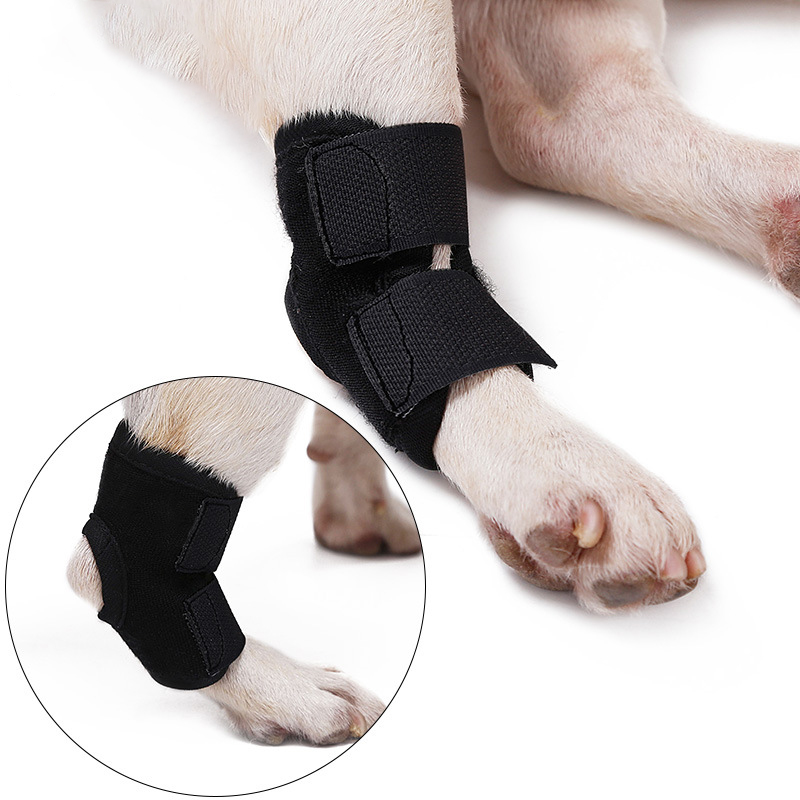CAUSES OF CARPAL HYPEREXTENSION
Most commonly, carpal hyperextension occurs as the result of a single traumatic injury that ruptures the palmer ligaments in the front foot. However, dogs may also develop carpal hyperextension from repeated injury caused by jumping from an elevated surface. This makes agility and performance dogs especially prone to this condition. Although less common, carpal hyperextension may also develop in dogs with immune-mediated joint disease or degenerative conditions of the ligaments.
SYMPTOMS OF CARPAL HYPEREXTENSION
Refusing to bear weight on the affected limb is one of the first symptoms of carpal hyperextension in dogs. Depending on the extent of injury, those affected may experience swelling around the joint and vocalize or cry out in pain. After a week or so, the dog will typically begin using the affected limb again, but will stand with a flat-footed stance. This looks similar to how a rabbit sits on its hind feet.
DIAGNOSING CARPAL HYPEREXTENSION IN DOGS
A veterinarian can typically diagnose carpal hyperextension after taking a thorough history and performing a physical exam. During an exam, the veterinarian will check for instability and may attempt to manipulate the carpus into a greater extension than normal. Although not always necessary, the veterinarian may also order x-rays to identify the exact location of the instability.
TREATMENT OF CARPAL HYPEREXTENSION IN DOGS
Treatment of carpal hyperextension depends on the cause and extent of injury. Sometimes, dogs require surgery to fuse the carpal joints together. In many cases, tendon stitching and temporary immobilization of the hock provides positive results. It’s important to note that full recovery following surgery depends on both medical management and proper support of the joint.
Canine support products like KindlyDogs Carpal Support provide optimal support of the joint following treatment.
PREVENTING CARPAL HYPEREXTENSION
Although not always possible, the best way to prevent carpal hyperextension is to prevent dogs from jumping from high surfaces. Concerned pet parents should consider using mobile steps that encourage dogs to walk, rather than jump, into vehicles and onto furniture. Extra weight puts pressure on the joints, increasing the chance of injury. Proper conditioning and weight management is crucial for agility and performance dogs.


0 Comments